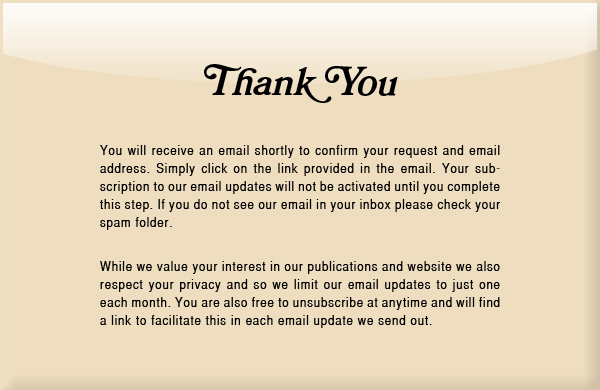Page Index:
Editorial Policy | 18th Century vs. 21st Century: Expectations and Conventions | The Editor as "Translator" | "Silent Editing" and Editorial Opinion | Terminology | Editing from Early Prints | Prefaces
Well into the first half of the 20th century, musical texts suffered – frequently extreme – alteration at the hands of music editors and publishers. Music of the 18th century in particular was regularly re-orchestrated, and movements were re-ordered to favor those calling for fast tempi. In an attempt to market printed music, publishers sought out famous performers to serve as editors. The resulting editions would be heavily marked with fingerings, altered dynamics and changed phrasing. Musical texts were drifting away from their source material, away from their composers’ intentions. Early music pioneer, Arnold Dolmetsch (1858 - 1940), in his monumental book The Interpretation of the Music of the XVIIth and XVIIIth Centuries (1915), called out “Amongst our present needs the most pressing is the publication of correct texts...” He goes on to describe the state of music publishing at the time of his writing, “... modern editions available exhibit an extraordinary variety of faults. In some, bars have been added; in others, whole passages suppressed.” Dolmetsch closes by saying “We can no longer allow anyone to stand between us and the composer.”
All of our editions are based closely on manuscripts or first editions. Alterations from the original text are made only when absolutely required and are carried out so that the performer can clearly identify editorial commentary. This transparency is an essential element in Grancino’s Editorial Policy as we strive to remove the barrier between performer and composer.
Editorial Policy (Modern Editions) [Back to top]
Editorial ties and slurs are indicated as:
![]()
Editorial dynamics and other additions are printed in square brackets:
![]()
The notation of accidentals is modernized.
Editorial accidentals are printed in square brackets: [♮]
Redundant accidentals are usually omitted; those that are purely cautionary appear in round brackets: (♮)
Corrections, when required, are made in the score (and parts) with original passages appearing in footnotes.
Probable corrections (where the original is possible but not likely) as well as variants and performance suggestions appear in footnotes.
Obsolete clefs are replaced by their nearest modern equivalent.
Where the original is inconsistently barred, regular bar lines are indicated by a broken line:
![]()
Minor inconsistencies of beaming are dispensed with though the original beaming is retained whenever it might have a bearing on performance.
In works with figured bass, the notation of the figures, and their exact positioning (especially of the resolution of dissonances) are sometimes decided editorially.
A simple realization for keyboard is added in small type.
In vocal works, the spelling of the text is modernized where this does not affect the pronunciation, and the punctuation is completed.
18th Century vs. 21st Century: Expectations and Conventions [Back to top]
In the 17th and 18th centuries a wide range of historical styles was not a part of a performer's thinking. It was unusual for musicians to play music from a previous decade, much less an earlier century. Thus the problems of "style," or of historical appropriateness, which confront the modern player – who undertakes to play music spanning several centuries – were virtually non-existent for his earlier counterpart. The Baroque or Classical musician was steeped in the style of the only period he knew, and thus the problem of communication – for the composer or publisher – was much less acute than it is today. Ornamentation, so much a part of 18th century music, need only be hinted at to be understood; and rhythm, even rhythmic complexities, would be grasped immediately though only approximately notated. Slurs and dynamic markings, too, did not demand slavish consistency ... the slightest indication was sufficient to indicate to the performer what was intended and it was left to his intelligence and sense of musical style and taste to carry them out. In short, complete accuracy in notation was not essential for the performer to understand the meaning of the composer.
Indeed, the performer was considered in those days to be an equal creator with the composer (often they were one and the same); and since his sense of style was uninfluenced by knowledge of any widely differing musical period, the interpretation of the music – the correct interpretation of the music – could safely be left in his hands. Hence musical notation, the way in which a composer communicates to a performer he has never met, was in these earlier eras a kind of short-hand, with as much to be gleaned from reading between the lines as from what actually appeared on the printed (or handwritten) page.
Coupled with this attitude was another, typical of the period, which eschewed consistency (perhaps as a lack of imagination). Thus a repeat sign might well be indicated in three ways, all within a single work:

(This example is from the Preface to A New and Complete Tutor, Grancino Editions ECS28).
These attitudes were quite different from those inculcated into the 21st century music student, who is taught to obey to the letter the most minute details of the printed page.
The Editor as "Translator" [Back to top]
The major emphasis of editorial policy at Grancino Editions is to bridge the gap for the modern player between what was written in the 17th and 18th centuries and what would have been tacitly understood. In this respect, we see our task as one of "translating" the music of an earlier era into a musical language more readily understood by modern musicians. To accomplish this we have adopted various means to indicate where what the composer actually wrote left off and what a contemporaneous performer would have understood begins. This is easily enough done when it comes to continuing bowing marks by means of broken-line slurs or missing dynamic continuations by bracketed dynamic markings. It becomes more difficult when a free ornamentation or an extended improvisation is appropriate. In such cases one is faced with the problem of how to suggest to the modern performer an appropriate improvisation without destroying the concept of spontaneity. Different works have necessitated different solutions to this problem.
"Silent Editing" and Editorial Opinion [Back to top]
With the exception of changing out-dated clefs into those more familiar to the modern player (the 18th century cellist was confronted with no less than nine different clefs!) and systematizing repeat marks, we have attempted to avoid all so-called "silent editing." It is our intention that the modern player should easily discern what was written by the composer and what was added by the editors for the purpose of clarification.
Inevitably, editorial opinion must creep in to a degree, for judgments must be made – and all judgments are to at least some degree subjective. Nevertheless, we have attempted to minimize the problem of subjective judgment by indicating all notational changes (even the most obvious ones) by the use of footnotes giving the original. We have also attempted to avoid entirely any indication of what we might personally do in performance in favor of what was actually given (or implied) in the original. Fingerings are almost entirely absent from these editions, since in 17th and 18th century music they rarely occur except in tutors; and editorial bowings (broken lines) are confined to what was implied in the music.
Terminology [Back to top]
Language was used in these earlier epochs with a freedom quite unknown today. It was not unusual for a work to be called "VI Solos" on the tide page (albeit the "solo" was meant to encompass at least a second, if not a third, player – e.g., Pasqualino's "Six Solos for Two Violoncellos") and then give each work within the set the title "Sonata." Similarly, "violoncello" on the cover of a work might be followed with "basso" on the inside pages – or vice versa. Our policy on this problem may appear to be somewhat haphazard, but the goal has always been to preserve as much of the original as possible without utterly confusing the modern performer.
Editing from Early Prints [Back to top]
One problem remains unavoidable: to what degree can one accept that an early engraving accurately represents what the composer originally wrote. The obvious answer is that, human error being what it is, it is almost impossible to assume that an early engraving or wood-cut will be entirely true to the original manuscript. However, it should be added in the same breath that while minor discrepancies and inaccuracies are bound to creep in, it would be wrong to assume that one is going to be led too far astray by an early print. The essential point here is that, just as performers at that time were steeped in the current style and virtually innocent of any other, so too must engravers have been incapable of committing gross errors of stylistic judgment such as we, with our much wider range of stylistic knowledge, might be capable of today.
Prefaces [Back to top]
Since most of the music published by Grancino Editions is unfamiliar to modern musicians, it seemed useful to write a brief preface for each volume giving a short biographical sketch of the composer and a few historical and/or performance comments on the music itself. Scholars will, of course, find this information inadequate. But these prefaces are intended more for the performer whose interest is merely to inform himself in a general way about an unknown composer and work. To do more in the prefaces would be far beyond the scope of this publishing project.

















